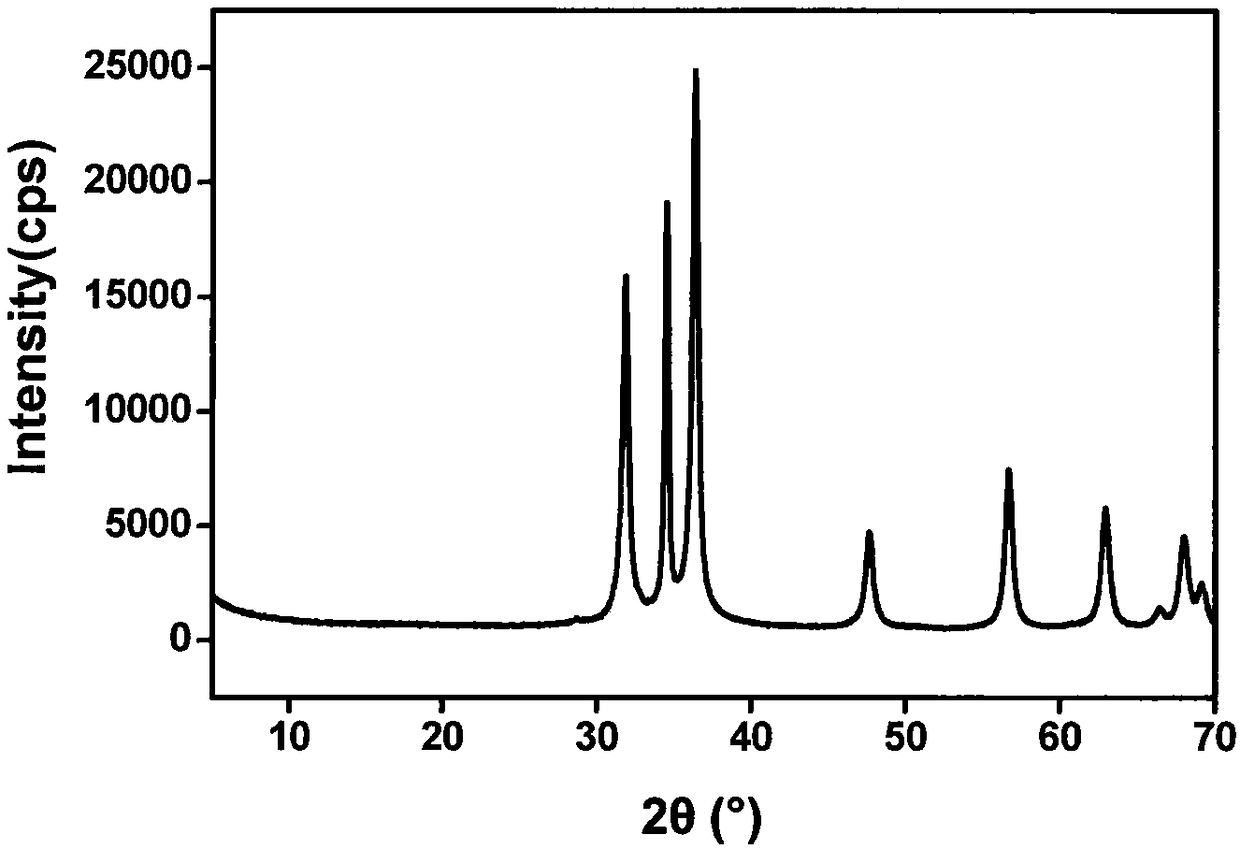A kind of preparation method of nano zno/cellulose composite material
A composite material and cellulose technology, which is applied in the field of preparation of nano-ZnO/cellulose composite materials, can solve the problems of limited composite amount and composite strength, a large amount of water or organic solvent, and low concentration of reactants, so as to achieve easy industrial production, Increased reaction accessibility and high concentration of reactants
- Summary
- Abstract
- Description
- Claims
- Application Information
AI Technical Summary
Problems solved by technology
Method used
Image
Examples
Embodiment 1
[0032] Add 0.5g bleached wood pulp cellulose to 100g ZnCl with a concentration of 65wt% at a temperature of 70°C 2 Stir in aqueous solution to obtain transparent and uniform cellulose ZnCl 2 solution; at the same time, 0.5g of wood pulp cellulose was added to the 8 / 12wt% 100g NaOH / urea solution at a temperature of -12°C and stirred to obtain another transparent and uniform cellulose NaOH / urea solution. The two cellulose solutions were slowly added dropwise to the colloid mill at 5°C, and the reaction continued for 10 minutes when the pH of the system was 8.5. The ZnO / cellulose composite was centrifuged and washed three times with water, and then dried in a drying oven at 105°C to obtain a granular nano-ZnO / cellulose composite material of about 30 nm in size.
Embodiment 2
[0034] Add 1g of bleached wood pulp cellulose to 100g of ZnCl with a concentration of 70wt% at a temperature of 70°C 2 Stir in aqueous solution to obtain transparent and uniform cellulose ZnCl 2 solution; at the same time, 1 g of wood pulp cellulose was added to 8 / 12 wt% 100 g NaOH / urea solution at a temperature of -12° C. and stirred to obtain another transparent and uniform cellulose NaOH / urea solution. The two cellulose solutions were slowly added dropwise to the colloid mill at 15°C, and the reaction continued for 5 minutes when the pH of the system was 9.5. The ZnO / cellulose composite was centrifugally washed with water for 3 times, and then dried in a drying oven at 105° C. to obtain a granular nano-ZnO / cellulose composite material of about 20 nm in size.
Embodiment 3
[0036] 1.5g of cotton linter fiber is added to 100g of ZnCl with a temperature of 70°C and a concentration of 75wt%. 2 Stir in aqueous solution to obtain transparent and uniform cellulose ZnCl 2 Solution; at the same time, 1.5g of cotton linter fibers was added to 8 / 12wt% 100g of NaOH / urea solution with a temperature of -12°C and stirred to obtain another transparent and uniform cellulose NaOH / urea solution. The two cellulose solutions were slowly added dropwise into the colloid mill at 40° C., and the reaction continued for 20 minutes when the pH of the system was 10. The ZnO / cellulose composite was centrifugally washed with water for 3 times, and then dried in a drying oven at 105° C. to obtain a granular nano-ZnO / cellulose composite material of about 20 nm in size.
PUM
 Login to View More
Login to View More Abstract
Description
Claims
Application Information
 Login to View More
Login to View More - R&D
- Intellectual Property
- Life Sciences
- Materials
- Tech Scout
- Unparalleled Data Quality
- Higher Quality Content
- 60% Fewer Hallucinations
Browse by: Latest US Patents, China's latest patents, Technical Efficacy Thesaurus, Application Domain, Technology Topic, Popular Technical Reports.
© 2025 PatSnap. All rights reserved.Legal|Privacy policy|Modern Slavery Act Transparency Statement|Sitemap|About US| Contact US: help@patsnap.com


